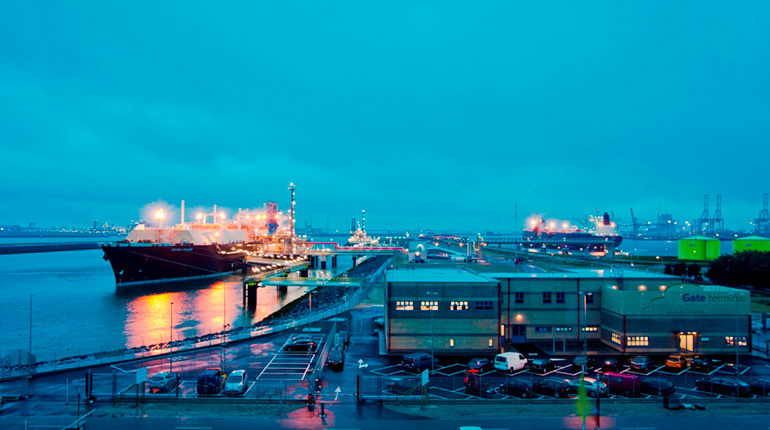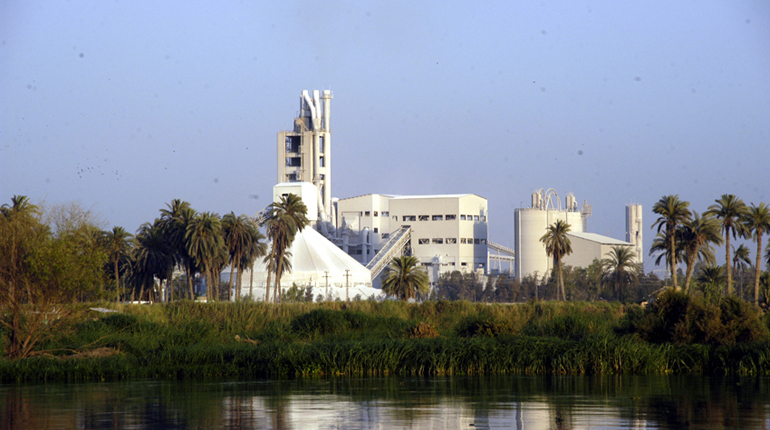 The Gate LNG terminal in the Netherlands. Groningen’s output cap means Europe needs to import more gas. (Gate)
The Gate LNG terminal in the Netherlands. Groningen’s output cap means Europe needs to import more gas. (Gate)
The Dutch government has lowered its annual production cap for the country’s giant Groningen field by 3 billion cubic metres per year, removing uncertainty that has surrounded its target output for months.
However, the result of the UK referendum on Friday to leave the EU has overshadowed the news and caused considerable volatility at Europe’s main gas hubs.
Groningen’s output will be limited to24 bcm/y for the next five gas years – a cut of 11% from the 2015/2016 cap of 27 bcm/y. The gas year runs from October to September
"The aim is for as even a distribution of extraction as possible, with as few fluctuations as possible," the Dutch government said in a statement on Friday. Extra gas may only be produced in the event of a cold winter or if otherwise absolutely necessary, the ministry added. In that case, an additional 6 bcm/y can be produced.
This is important news for the field, which has helped the Netherlands play a vital role as a swing producer in Northwest Europe – a role the country now looks able to sustain in the immediate future. However, the field’s reduced output means the region will still need to source volumes from elsewhere.
"Northwest Europe will have to import more gas from Russia or increase its LNG import options, of which Germany is already in the process of doing," Justin Dargin, an energy expert at the University of Oxford, told Interfax Natural Gas Daily.
Catriona Scott, senior analyst at Interfax Global Gas Analytics, said the decision to further reduce Groningen’s output cap could provide moderate support for TTF hub prices this winter, but that its impact would likely be limited.
With the unprecedented uncertainty delivered by the UK’s EU referendum result, other factors including oil prices and macroeconomics could outweigh what is happening with Groningen, she added.
Elsewhere, evidence that supply will become increasingly tight during winter is already visible: prices for the peak of winter 2016/2017 on the NBP forward strip have risen from around 43 p/th ($5.73/MMBtu) to 45 p/th since the middle of last week.
Supplies secure
Besides the impact on prices, the 24 bcm/y maximum output should be enough to guarantee the security of supply of low calorific gas for the Netherlands as well as gas for consumers in neighbouring countries, the country’s transmission system operator Gasunie Transport Services said following the government’s decision.
Nick Campbell, an energy risk manager at Inspired Energy Solutions, said the Groningen news was significant but he felt it would weigh on rather than support hub prices because traders had previously factored in more severe production limits.
Campbell suggested other factors, such as the Brexit vote and currency fluctuations, would have a greater impact on gas trading in Europe.
"Coupled with the potential demand destruction from any economic fallout from the UK referendum, [it] could further weigh on UK and continental gas prices," he added.
But although the production caps have diminished Groningen’s role in the European supply picture, its importance should not be underestimated.
"It is the [ability] to swing – which is a unique property of Groningen – that makes it remarkably valuable. When the demand in Northwest Europe suddenly spikes, you need a source of supply close to Europe that can react immediately," Jonathan Stern, founder of the Natural Gas Research Programme at the Oxford Institute for Energy Studies, told Interfax Natural Gas Daily earlier this month.
The firm production cap has forced Dutch trading house GasTerra, which has exclusive rights to sell gas from Groningen, to rethink its strategy. The company supplied 70.3 bcm in 2015, 11 bcm less than in 2014, mainly as a result of Groningen’s production ceiling.
As a result of the output cap, the company will no longer negotiate new supply deals or extend long-term contracts. GasTerra aims to reduce operating costs by up to 30% by 2018, and it is also looking to reduce costs by other means: the company entered into arbitration with Gazprom in May in an effort to reduce the price of its long-term contracts with the Russian supplier. Stern expects a decision within the next year.
Market players will have six weeks from 24 June to respond to the production cap proposal. A final decision on the field’s long-term production outlook is expected in October 2016.
The Dutch Cabinet has requested Groningen’s operator NAM to submit a new production plan in 2020, one year before a new government production plan is expected to be announced on 1 October 2021.








Talk to us
Natural Gas Daily welcomes your comments. Email us at [email protected].